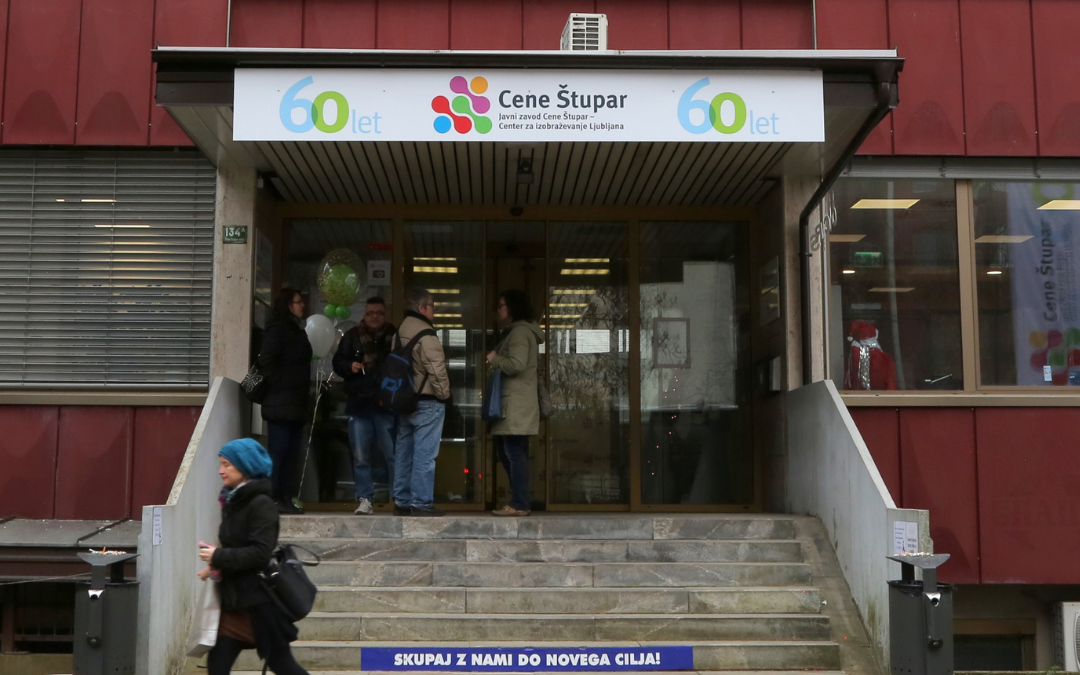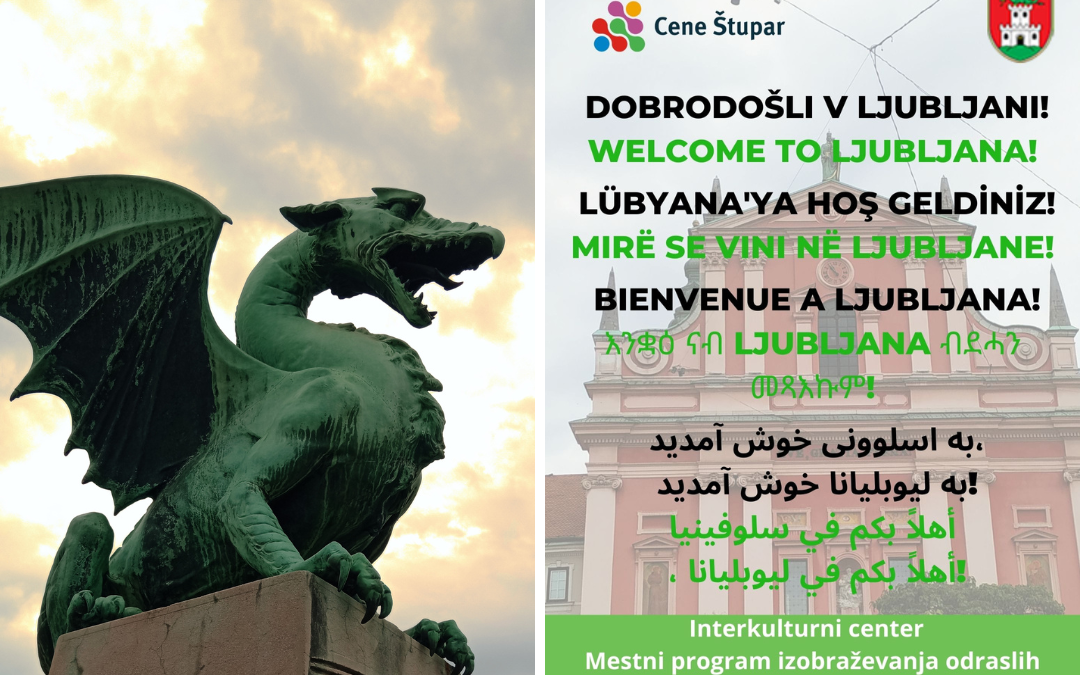Brochure in eight languages with basic information about the city, the country and thematic phrasebooks for first aid
Sower in the field
Since 2010, the municipal adult education programme has been financing or co-financing various free programmes for the City of Ljubljana residents. These include language courses for retirees and recipients of social assistance, study circles, the Multigenerational Centre Ljubljana, Slovenian courses for parents, digital workshops, the Ferfl programme – a programme to promote entrepreneurial ideas with a social impact, adult primary school, and the Intercultural Centre Ljubljana project.
Based on the available financial resources, we prepare an annual activity plan. This plan changes according to the needs we identify within our institution and society. For several years, we have been toying with the idea of creating a brochure in which foreigners would find the necessary information in various languages. The journey from idea to realisation was not easy or clearly defined. We pondered over the content, translations and design and realised that it was a complex and financially demanding project, so we postponed its implementation from year to year. We wanted to create a product that would be useful and interesting. We set ourselves the goal of including individuals with migrant backgrounds, those who are the most vulnerable.
The seed sprouts
Let’s take a moment to look back at the recent past, during the COVID-19 pandemic, when we had to change our teaching methods and empower our participants for distance learning. We began to rapidly digitally literate participants in the Elementary School for Adults programme so that elementary school classes could proceed smoothly despite restrictive measures and the closure of schools and public institutions. The most vulnerable participants were those in grades 1 to 4 of the literacy programme. At the first opportunity for in-person classes, we started with digital literacy. In today’s world, this is a necessity that dictates the pace of life.
At that time, we conducted digital workshops within the Intercultural Centre, and the idea of creating a brochure with information about Ljubljana and Slovenia by our participants under the guidance of mentors – our teachers – was born.
Budding
We began shaping the content in May 2022, and after discussions with mentors, we laid the foundation for further work. We initiated the so-called Welcome to Ljubljana, Welcome to Slovenia workshops when we finished classes in June. We engaged with participants to learn what they wanted to know about Ljubljana and Slovenia and taught them how to use computers and search for information online. The text development phase began in August, and from September to November, we translated it into their native languages and proofread it. Family members of our participants, teachers, mentors, and intercultural mediators assisted us in this process. From June to November, we visited the city centre with the participants, where we created visual content used in the brochure. Some photographic material was already stored in our personal phone archives. In December, we took care of the design. In the process, we effectively utilised the training Using the CANVA Online Environment for creating educational content that we attended in 2021 as part of the professional development of educators in non-formal adult education programmes.
A Flower Blooms
The brochure Welcome to Ljubljana, Welcome to Slovenia is available on our website in digital format. It’s written in eight languages: Slovenian, English, Turkish, Albanian, French, Tigrinya, Persian and Arabic, which are the native languages of our participants. It’s divided into seven thematic units, each followed by a thematic phrasebook. After the first unit, which provides basic information about the City Municipality of Ljubljana, you’ll find a phrasebook with various greetings in all eight languages. The second unit, introducing some landmarks of Ljubljana, is followed by a list of conversational phrases. The third unit gives information about available public transportation, followed by a phrasebook with numbers up to ten. The fourth unit presents basic facts about Slovenia, followed by the second part of the number phrasebook, covering numbers greater than ten. The fifth unit discusses historical milestones in Slovenia and essential cultural elements, followed by a phrasebook for days of the week. The sixth unit showcases Slovenian symbols and mentions natural landmarks, followed by a phrasebook that provides months in the eight languages mentioned above. The final unit continues the theme of natural landmarks and introduces the climate, and the last phrasebook contains descriptions of the seasons.
Fieldwork
We considered the participants’ wishes and the mentors’ feedback when structuring the content. We know that the brochure can still be expanded in terms of content, adding more to the informational sections and the phrasebooks. Nevertheless, it’s important to emphasise that the brochure is the result of our work and, above all, our participants who have shown their knowledge, dedication and perseverance and shared their culture and language with us. Credit also goes to the mentors for their hard work, encouragement and guidance of the participants.
A retake is awaiting us later this year: in June, we started searching the web again, and in August, we continued creating brochure number 2, which will see the light of day in January 2024. The basic direction is set, but this time, too, we will go with the flow, taking into account the mentors’ and participants’ wishes and experiences. The selection of languages will not be the same, as some students have progressed and are continuing their educational journey, and new students from different countries who speak languages many have not yet heard of have joined. More information about the new Welcome to Ljubljana 2 project will be revealed next year.
Katja Potočnik Nussdorfer (katja.potocnik@cene.stupar.si), Cene Štupar – CILJ



